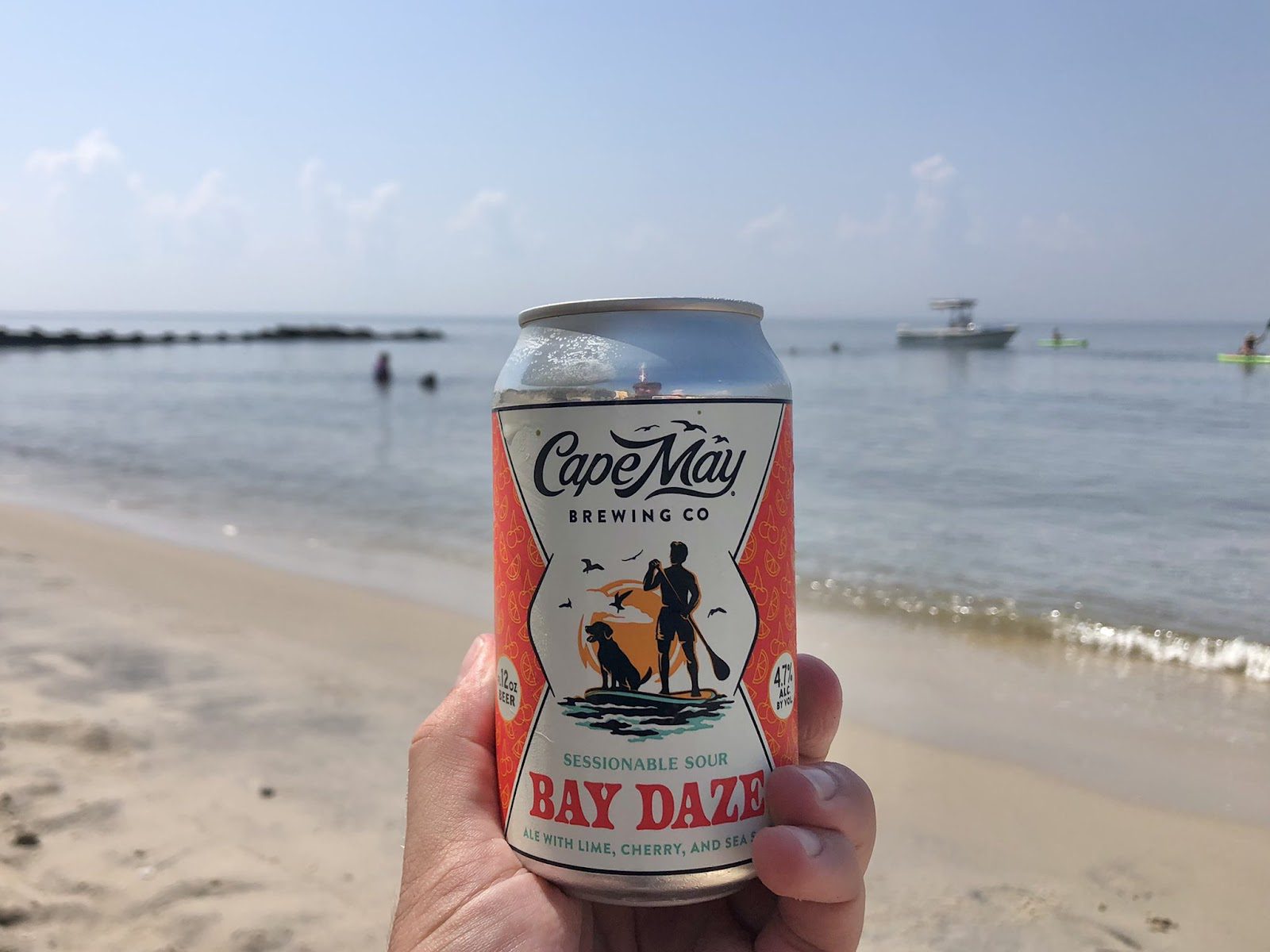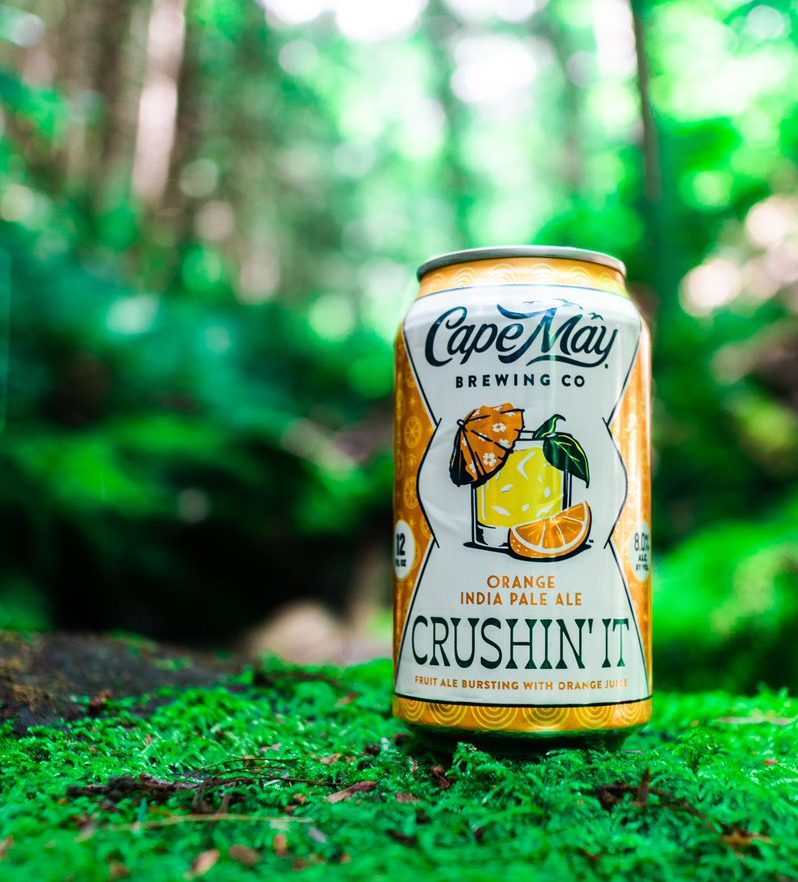Ordering a beer while waiting for your flight to come in isn’t out of the ordinary. Starting a beer company at an airport – a little more so.
In 2011, father-son duo Ryan and Bob Krill joined forces with one of Ryan’s close friends, Chris Henke, to build one of the most well-known craft breweries in the mid-Atlantic. Cape May Brewing Company was born in a warehouse on the land of the Cape May Airport. The brewery is aptly named for its location in the quaint, popular seaside village on New Jersey’s southern coast.

The town sits at the southernmost point of the Cape May peninsula – a junction of the Atlantic Ocean and Delaware Bay.
A well-known and historic seaside resort town sees an influx of vacationers and seasonal residents from late spring to early fall, many of whom are ready to kick back and enjoy a locally brewed craft beer with a witty name and pastel-hued coastal design on the aluminum can.
The town, which has been named one of America’s Top 10 beaches by Travel Channel, is a crown jewel of the mid-Atlantic, offering a more historic feel than other seaside areas in the region through its arrays of stately, Victorian homes alongside the township’s recognizable promenade.
Cape May grew in recognition during the early 1940s while the U.S. was deeply entrenched in the conflicts of the Second World War. Placed advantageously for maritime affairs, the U.S. Navy quickly grew its facilities in Cape May to help protect shipping routes along the eastern seaboard.
While Cape May is still home to twelve major naval facilities and their service people in uniform, it has also grown into a sought-after summer location, adorned with small charming businesses including Cape May Brewing Company.
The beer company has become popular regionally for its dedication to innovative flavor profiles in its brews, commitment to environmentalism, and collaboration and donations to local sustainability-focused groups.

In its first year, Cape May Brewing produced 60 barrels of beer and the company’s entire staff consisted of its three founders. More than a decade on, it employs over 130 individuals and brewed an estimated 53,000 barrels of beer last calendar year. The company distributes to 21 counties in New Jersey, nine counties in eastern Pennsylvania, and various locations in Delaware.
Unlike many other businesses, Cape May Brewing sees sustainability as an ethos, not simply a box to check or a strategy for a tax write-off. To them, that means effective environmental stewardship however they can. “We’ve only got one [Earth],” Cape May Brewing writes in a sustainability statement, “and we should leave it as we found it.”
Sustainability falls under one of the three major tenets of the organization: Be A Good Neighbor. From packaging to resource consumption, waste production, donations, and awareness campaigns, Cape May Brewing certainly treats sustainability as a main ingredient.

Many of the Brewing Company’s products donate to regional organizations. Brews like “Twin Fin,” a New England-style IPA that donates a portion of each pint’s proceeds to a local ocean preservation activist non-profit, or “Brave Noise,” a Pale Ale released in solidarity with activist Brienne Allan’s work to advocate for safe, inclusive, discrimination-free spaces within the beer industry highlight Cape May Brewing’s deep connection with both environmental and social sustainability.
More conventional mechanisms for green business are at work for Cape May Brewing Co. The brewing process is by nature a resource-intensive one, but the company has been working hard to minimize the environmental impact of that. Recently, they have switched the brewery’s lighting to energy-saving LED – a popular transformation that has a slightly higher upfront cost but lasts twenty times longer than traditional bulbs while only pulling 17% of the electricity.
Cape May Brewing’s packaging has undergone changes, too, as distribution becomes more central in their business plan (particularly in the midst of current health concerns). The brewery has switched from the conventional 6-pack holders that grew in notoriety in the early 2010s for their ability to get caught on sea creatures like turtles, to PacTechs. PacTechs are the eclectically colored 6 and 4-pack holders that almost click on the top of cans, are wildlife-friendly, and are made entirely of recycled plastic. Other distribution packaging changes (like plastic wrap and disposable shipping strap alternatives) have helped Cape May Brewing Company prevent the disposal of over 90,000 pounds of plastic each year. The company now offers reusable cups and compostable straws in their tasting room.
Cape May Brewing Company may have started as a small operation and leap of faith in a warehouse at an airport, but their success is sky high, and they see no limit on their growth or their ability to further sustainability practices.






